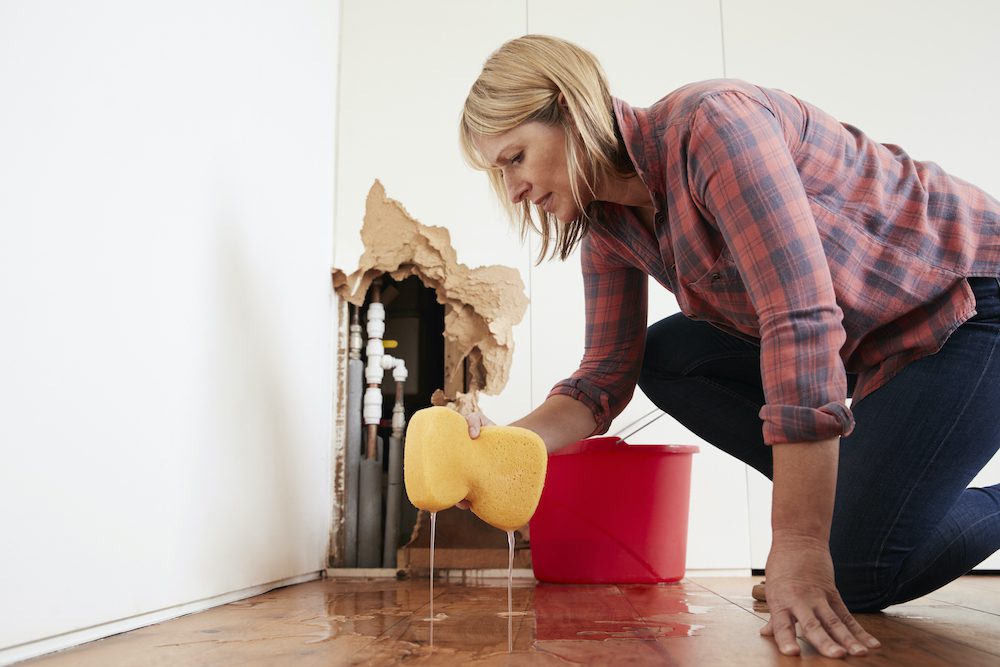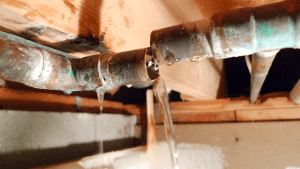6 Ways to Locate Concealed Water Leaks in Your Home
6 Ways to Locate Concealed Water Leaks in Your Home
Blog Article
Just how do you actually feel on the subject of Finding hidden leaks?

Early discovery of dripping water lines can alleviate a prospective disaster. Some tiny water leakages might not be visible.
1. Examine the Water Meter
Every residence has a water meter. Checking it is a proven way that assists you discover leaks. For beginners, turn off all the water resources. Guarantee no one will certainly purge, utilize the tap, shower, run the washing maker or dishwasher. From there, go to the meter as well as watch if it will certainly alter. Given that no person is utilizing it, there should be no activities. That indicates a fast-moving leak if it moves. Similarly, if you find no changes, wait an hour or more and also examine back again. This indicates you may have a slow leak that can also be below ground.
2. Inspect Water Intake
Assess your water expenses and also track your water consumption. As the one paying it, you need to see if there are any disparities. If you spot sudden changes, in spite of your intake being the same, it implies that you have leakages in your plumbing system. Remember, your water expense need to fall under the exact same range each month. An abrupt spike in your bill suggests a fast-moving leak.
A stable increase every month, even with the same practices, shows you have a slow leak that's additionally gradually intensifying. Call a plumber to completely inspect your building, specifically if you really feel a cozy location on your floor with piping underneath.
3. Do a Food Coloring Test
When it concerns water consumption, 30% comes from toilets. Test to see if they are running correctly. Drop specks of food shade in the storage tank as well as wait 10 minutes. There's a leak in between the tank as well as bowl if the color somehow infiltrates your bowl during that time without flushing.
4. Asses Outside Lines
Do not forget to check your exterior water lines also. Test faucets by connecting a garden tube. Must water seep out of the link, you have a loose rubber gasket. Change this and ensure all connections are limited. If you have actually obtained a lawn sprinkler, it will help get it professionally took a look at and kept yearly. One small leakage can waste tons of water and also spike your water expense.
5. Inspect and Assess the Situation
Homeowners ought to make it a behavior to examine under the sink counters and even inside cupboards for any kind of bad odor or mold growth. These two warnings indicate a leak so timely interest is needed. Doing regular examinations, also bi-annually, can save you from a major problem.
Examine for discolorations and damaging as a lot of pipes as well as appliances have a life expectations. If you presume leaking water lines in your plumbing system, do not wait for it to escalate.
Early discovery of leaking water lines can minimize a prospective catastrophe. Some little water leaks may not be visible. Inspecting it is a surefire means that helps you uncover leaks. One little leak can waste heaps of water and increase your water bill.
If you suspect leaking water lines in your plumbing system, do not wait for it to rise.
How to Know If Your Home Has a Hidden Leak
Water Meter Reveals Inexplicable Water Usage
If you’d like to test whether or not there’s a leak somewhere in your home, you can do this using your water meter. Here is how to conduct the test:
Don’t use any water in your home for at least 30 minutes; this also means not turning on faucets or water-using appliances.
Go outside, and check your water meter for activity.
If your water meter shows that there was activity, even though no one was using any water, this proves that there is a leak in your home.Visible Mold or Mildew Growth
Leaks behind walls create moist, dark environments that allow mold and mildew to grow and thrive. Eventually, you might see mold growth forming on the wall closest to a hidden leak.
If mold is growing in an area that receives a high amount of moisture, such as a bathroom, it may simply be an indication that better ventilation is needed. However, if you see mold growth on a wall or the ceiling in an area where you would not expect, you probably have a hidden leak.
Musty, Mildew Odor
Sometimes you might not be able to see the mold or mildew that is growing as a result of a leak. However, the smell can give the problem away just as easily. If you catch a whiff of something musty, there’s a good chance that old water is collecting somewhere in your home that you can’t see.
Stained/Warped Walls, Ceilings, or Floors
When your home soaks up water, a variety of red flags can become visible, including ceiling stains, bubbling drywall, warped walls, and sagging floors. While these issues can be caused by excess humidity, they can also be signs that a pipe or plumbing connection has started leaking behind your walls.
Inexplicably High Water Bill
After a while, you get a general sense for what your water bill should be. If you own a pool or sprinkler system, your bill will tend to be higher during summer. However, if you receive a water bill that seems especially high, and you can’t figure out what caused it, then you may have a hidden leak somewhere that’s increasing your bill.
https://www.plumbingjoint.com/blog/2019/july/how-to-know-if-your-home-has-a-hidden-leak/

Do you really like more info about Hacks to detect leaks? Post a short review down below. We'd be glad to see your insights about this blog. We are looking forward that you come back again later on. Sharing is good. You just don't know, you will be helping someone out. I value reading our article about Hacks to detect leaks.
Report this page